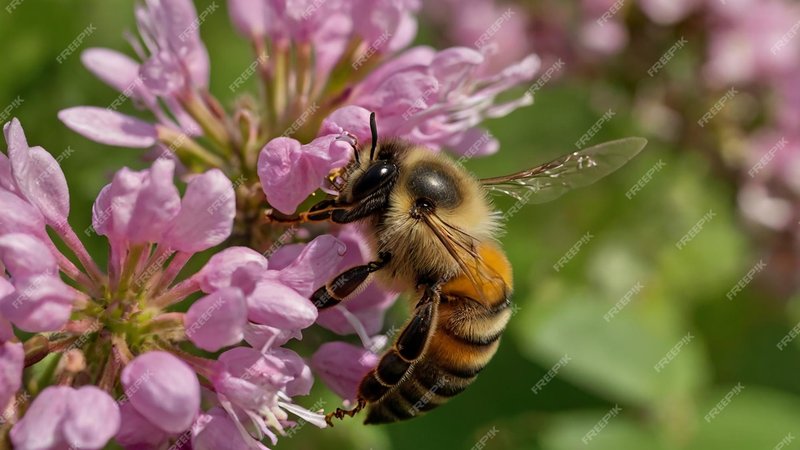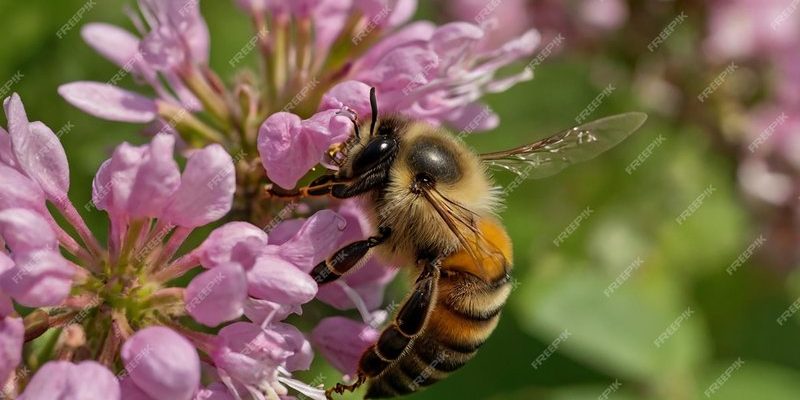
Just like a well-designed remote can make controlling your TV a breeze, leafcutter bees help control and enhance the natural order of our environment. By transferring pollen from one plant to another, they ensure fruits, seeds, and flowers keep blooming year after year. But their contributions go beyond simple pollination. Let’s dive into the multi-faceted role of leafcutter bees and see how they keep the ecosystem thriving.
What Are Leafcutter Bees?
Leafcutter bees belong to the Megachilidae family, and they’re often recognized by their unique behavior of cutting leaves and petals to create nests. Instead of building hives like honeybees, these solitary bees make individual nests, usually in small hollow spaces or underground. Each leaf fragment they collect serves as building material for their nests, creating a safe haven for their larvae.
You might be wondering what makes these bees so special. Leafcutter bees are incredibly efficient pollinators, often doing the job without even realizing it. As they flit from flower to flower, they inadvertently pick up pollen on their bodies and transfer it to other plants. This natural process helps promote biodiversity, which is essential for a healthy ecosystem.
The Pollination Process
Pollination is a key process in the reproductive cycle of many plants. It involves transferring pollen from the male part of a flower (the anther) to the female part (the stigma). Here’s where our leafcutter bee comes in. As they collect nectar from flowers, they brush against the anthers, picking up pollen.
When they move on to the next flower, they drop some of this pollen on the stigma, allowing fertilization to occur. But it’s not just about numbers; the *quality* of pollination matters too. Leafcutter bees are known for being effective pollinators, especially for plants like alfalfa, which is crucial for livestock feed.
Here’s the thing: without these little pollinators, many plants wouldn’t produce the fruits or seeds we rely on. Some estimates suggest that around 30% of our food crops depend on pollinators, and leafcutter bees play a significant role in this. So, every time you enjoy a juicy apple or vibrant flower, you can thank leafcutter bees for their hard work!
Leafcutter Bees and Biodiversity
Biodiversity refers to the variety of life in a particular habitat. Leafcutter bees contribute to this in several significant ways. By pollinating various plants, they support a wide range of flora, which in turn creates habitats for numerous other species. Healthy plant life offers food and shelter for birds, insects, and mammals, forming a complex web of life.
Additionally, leafcutter bees are particularly good at pollinating native plants, which are crucial for maintaining local ecosystems. These native plants provide essential resources for wildlife and help stabilize the environment. By fostering biodiversity, leafcutter bees ensure that ecosystems remain resilient against changes and challenges like disease or climate fluctuation.
Interestingly, when bees are absent, plant populations can decline, which negatively impacts the species that rely on them. This domino effect highlights just how interconnected everything is in nature.
Challenges Facing Leafcutter Bees
Despite their importance, leafcutter bees face numerous challenges today. One major issue is habitat loss, often caused by urbanization and agricultural expansion. As their nesting sites disappear, these bees struggle to find suitable places to lay their eggs.
Another concern is pesticide use. Chemicals that farmers apply to control pests can inadvertently harm beneficial insects like leafcutter bees. Even pesticides labeled as “safe” can have negative effects on their populations.
Climate change also poses a serious threat. Changes in temperature can disrupt the timing of flowering plants, making it harder for bees to find food when they need it most. Without the natural rhythm between plants and pollinators, both can suffer.
How to Support Leafcutter Bees
If you’re interested in helping the leafcutter bee population thrive, there are simple steps you can take! First, consider planting a diverse range of native flowers in your garden. Flowers that bloom at different times of the year will provide food sources throughout the seasons. This not only benefits bees but also other pollinators.
You can also create safe nesting habitats by leaving some areas of your garden a bit wild. Hollow stems, small piles of twigs, and patches of bare soil can offer ideal homes for leafcutter bees.
Finally, be mindful of pesticide use. Whenever possible, opt for organic gardening methods that avoid harmful chemicals. This simple choice can greatly impact the health of not just leafcutter bees, but countless other pollinators too.
In conclusion, leafcutter bees are more than just bees that cut leaves; they are essential players in our ecosystems. By facilitating pollination, supporting biodiversity, and providing habitats for other species, they maintain the balance of nature. Just like a well-tuned remote makes your home entertainment experience smoother, leafcutter bees help orchestrate the harmony of our natural world.
Understanding their role reminds us of the interconnectedness of life on Earth. If we commit to protecting and supporting these industrious little bees, we help ensure a thriving planet for future generations. So next time you see a leafcutter bee buzzing about, take a moment to appreciate the small, yet mighty, impact they have on our ecosystem.

